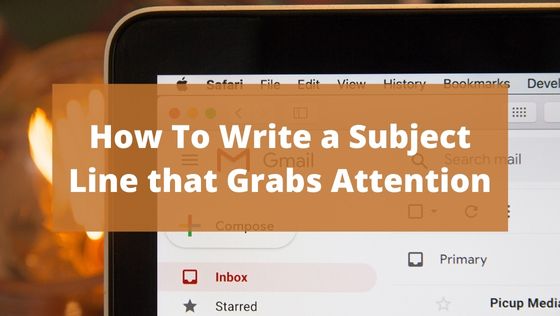
A subject line is potentially the most important element of an email message. Why? Because the subject line is what a subscriber sees in their inbox. It determines whether they will open the message or send it to trash.
Don’t worry though. I have a few suggestions to help you write better subject lines.
Here are 7 Tips to Optimize your Subject Lines:
1. How readers see your subject line
The subject line is the first text recipients see after your sender’s name when an email reaches their inbox. Some may see the full subject line. Others may only see a few words.
So, consider how the subject will appear for different readers.
2. Shorten your subject line
Oftentimes, people check emails from their mobile device, so it’s better to keep it short yet sweet and catchy. If you write a long subject line, much of it won’t be seen by mobile viewers.
So, make your subject line concise. Remember that your reader recipient will likely scan their inbox quickly, looking for a message to open and read.
3. Use an announcement teaser right in the subject line
If you have something new and exciting to share in your email, show that eagerness in your subject line. That includes an update about your business, product release, or your organization. Sharing an announcement with your email subscribers is great because as readers they feel like they’re the first to know about this update.
4. Be unique to stand out in the inbox
To write a great subject line, you need to understand who your audience is. Know your value proposition and how to communicate it. Share how you can help.
Think about what your business is specifically known for. Highlight that in your subject line.
Don’t hesitate to put your business name right in the subject line. This is especially true if your company’s name is well known. Just don’t overuse this technique. By the way, you can use your name or the name of someone mentioned in your email to get attention.
Many people will open an email simply based on the sender, so don’t miss the chance to reinforce your specific business.
5. Avoid spam words
Subject lines that use aggressive hype will be marked as spam. Avoid loud punctuation, all caps words, and multiple exclamation points. Instead of focusing on promotion, try offering your expertise and sharing information your readers will find more useful and appreciative.
6. Use deadlines
Be careful about inciting a sense of urgency with your subscribers. Don’t be misleading or fearful.
Mentioning that a sale ends tomorrow or counting down the days until a new product’s release might be interpreted as spam. And it will increase unsubscribes.
7. Test your subject line
Last but not the least, test your subject line before sending your email to a single recipient. You can run it by a teammate or a friend and get feedback about how engaging the subject line is. You can also work with an email copywriter.
You can ask for feedback to determine if there is something you need to change.
When you’re in a rush, you won’t have time for this extra step. Make sure you build a queue of email messages to send out. That will allow you more time.
Implement Best Practices and then Measure Results
Subject lines can both negatively and positively impact your email marketing campaigns.
Consider the best practices above when writing subject lines. You have your own perspective and style when it comes to email copywriting.
There is nothing wrong with asking for help. Look for tips.
One great best practice is to use an email subject line swipe file. Copy and paste subject lines you like into the file. Then, refer to it when writing a new subject line.
Keep an eye on your email analytics. Review the numbers. How are your emails performing?
I hope the tips above will help you in the future. Comment below to share your email tips for writing subject lines.



Connect with me Online: